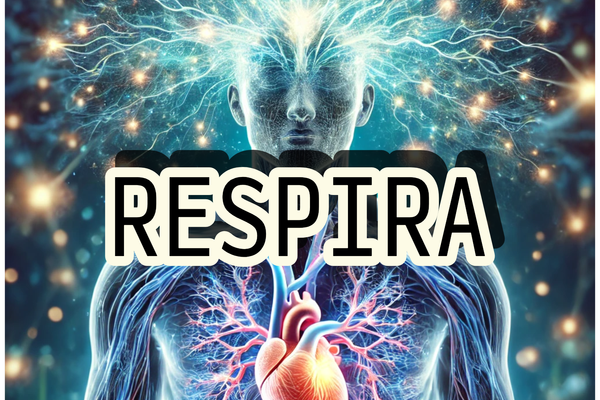Unlocking the Positive of the Task Positive Network : Enhancing focus and Productivity

Maintaining focus and productivity can be challenging. One of the key elements in achieving this is understanding the Task Positive Network (TPN) in our brains. The TPN plays a crucial role in our ability to concentrate on tasks, make decisions, and perform goal-oriented behaviors. By unlocking the potential of the TPN, we can significantly enhance our productivity and focus. This article delves into the science behind the TPN, its connection with the prefrontal cortex, techniques to activate it, and the importance of balancing it with the Default Mode Network (DMN) for optimal mental health.
Understanding the Brain’s Networks
The human brain operates through various networks, each responsible for different functions. Two of the most critical networks are the Task Positive Network (TPN) and the Default Mode Network (DMN).
Task Positive Network (TPN)
The TPN is activated when we engage in focused tasks, such as problem-solving, planning, and other goal-directed activities. This network involves brain regions like the dorsolateral prefrontal cortex and the posterior parietal cortex, which are essential for attention and executive functions.
Default Mode Network (DMN)
In contrast, the DMN is most active when we are at rest, daydreaming, or engaging in self-referential thoughts. It includes areas such as the medial prefrontal cortex and the posterior cingulate cortex. The DMN is crucial for internal reflections, creativity, and processing past experiences.
Interaction Between TPN and DMN
These two networks work in a dynamic balance, switching based on the nature of the activities we perform. Understanding how to regulate this balance can help us improve our focus and productivity while maintaining mental well-being.
The Science Behind the Task Positive Network
The TPN is a complex neural network that coordinates our attention and goal-oriented behaviors. Key regions involved in the TPN include:
• Dorsolateral Prefrontal Cortex (DLPFC): Essential for working memory and cognitive flexibility.
• Posterior Parietal Cortex (PPC): Plays a role in spatial attention and the integration of sensory information.
Neurotransmitters and Neural Pathways
The functioning of the TPN relies on neurotransmitters such as dopamine and norepinephrine, which facilitate communication between neurons and enhance cognitive processes like attention and motivation.
Scientific Studies on TPN
Recent research has highlighted the importance of the TPN in various cognitive functions. Studies have shown that activation of the TPN improves performance in tasks requiring sustained attention and problem-solving abilities.
The Role of the Prefrontal Cortex in Focus and Productivity
The prefrontal cortex (PFC) is a critical region of the brain that significantly influences our focus and productivity. It is involved in higher-order cognitive functions, including planning, decision-making, and problem-solving.
Structure and Subregions
The PFC is divided into several subregions, each with distinct functions:
• Dorsolateral Prefrontal Cortex (DLPFC): Involved in working memory and executive functions.
• Ventromedial Prefrontal Cortex (vmPFC): Plays a role in emotional regulation and decision-making.
• Anterior Cingulate Cortex (ACC): Important for error detection and cognitive control.
Driving Focus and Attention
The PFC helps sustain attention by filtering distractions and maintaining focus on relevant tasks. It coordinates with other brain regions to prioritize goal-directed activities and manage cognitive resources effectively.
Impact on Productivity
Activation of the PFC enhances cognitive control and flexibility, allowing for better task management and decision-making. Healthy functioning of the PFC is associated with improved work and study performance, highlighting its importance in daily productivity.
Strengthening the Prefrontal Cortex
There are several strategies to strengthen the PFC:
• Cognitive Exercises: Activities like puzzles, memory games, and problem-solving tasks.
• Mindfulness Practices: Techniques such as meditation and deep breathing to enhance focus and reduce stress.
• Lifestyle Changes: Adequate sleep, regular physical exercise, and a balanced diet to support brain health.
Techniques to Enhance TPN Activation
To maximize the benefits of the TPN, incorporating specific techniques into daily life can be highly effective.
Mindfulness and Meditation
Practices like mindfulness meditation can help enhance attention and reduce mind-wandering, thereby activating the TPN. Regular meditation has been shown to improve concentration and cognitive flexibility.
Cognitive Training
Engaging in brain exercises and cognitive training programs can strengthen neural pathways associated with the TPN. These activities challenge the brain and promote neuroplasticity, leading to better focus and mental agility.
Creating a Conducive Environment
Minimizing distractions and setting clear, achievable goals can create an environment that supports TPN activation. Organizing your workspace and managing time effectively are practical steps to enhance focus.
Practical Tips
• Set Specific Goals: Break tasks into manageable chunks and set clear, specific goals.
• Limit Distractions: Use tools and techniques to minimize interruptions, such as noise-canceling headphones or designated quiet times.
• Practice Regular Breaks: Incorporate short breaks to prevent mental fatigue and maintain high levels of productivity.
Balancing TPN and DMN for Optimal Mental Health
While activating the TPN is crucial for productivity, it’s equally important to balance it with the DMN to ensure overall mental well-being.
Importance of Balance
A healthy balance between the TPN and DMN allows for periods of focused activity followed by rest and reflection. This balance helps prevent burnout and supports creativity and problem-solving.
Signs of Overactivation
Overactivation of the TPN can lead to stress and mental fatigue, while excessive DMN activity may result in procrastination and lack of focus. Recognizing these signs can help in adjusting activities to restore balance.
Tips for Achieving Balance
• Incorporate Breaks: Schedule regular breaks during work sessions to relax and recharge.
• Engage in Creative Activities: Allow time for activities that stimulate the DMN, such as daydreaming, walking in nature, or engaging in hobbies.
• Practice Mindfulness: Mindfulness practices can help in transitioning smoothly between focused work and restful states.
Future Directions in TPN Research
The field of neuroscience continues to uncover new insights into the TPN, offering exciting possibilities for enhancing cognitive function and productivity.
Future Directions in TPN Research (continued)
Emerging Trends in Neuroscience Research
Advancements in neuroimaging techniques, such as functional magnetic resonance imaging (fMRI) and electroencephalography (EEG), have allowed scientists to study the TPN with greater precision. These technologies are shedding light on how the TPN operates and interacts with other brain networks.
Potential Technological Advancements
Innovative technologies like neurofeedback and brain-computer interfaces (BCIs) are being explored to enhance TPN activity. Neurofeedback involves real-time monitoring of brain activity, allowing individuals to train themselves to optimize their TPN function. BCIs can potentially enable direct communication between the brain and external devices, offering new ways to boost cognitive performance.
Future Applications
- **Education:** Techniques to enhance TPN activation could improve learning and academic performance by increasing students’ focus and attention.
- - **Workplace Productivity:** Integrating TPN-enhancing practices in corporate settings could lead to higher productivity and better job satisfaction.
- - **Therapeutic Uses:** Understanding and manipulating the TPN may aid in treating cognitive impairments and mental health disorders, such as ADHD and depression.
The Task Positive Network (TPN) is a powerful aspect of our brain’s functionality, crucial for maintaining focus, attention, and productivity. By understanding how the TPN operates and its connection with the prefrontal cortex, we can adopt strategies to enhance its activation. This, in turn, can lead to significant improvements in our personal and professional lives.
Balancing the TPN with the Default Mode Network (DMN) is essential for optimal mental health, preventing burnout, and fostering creativity. As neuroscience research continues to advance, we can look forward to innovative methods and technologies that will further unlock the potential of the TPN.
Implementing the techniques and tips discussed in this article can help you harness the power of the TPN, leading to enhanced cognitive function, better focus, and increased productivity. Start integrating these practices into your daily routine and experience the transformative effects on your brain and overall well being.
For those interested in delving deeper into the science and practical applications of the Task Positive Network, the following resources are recommended:
Books
- . — ”The Organized Mind” by Daniel J. Levitin
- . — ”Thinking, Fast and Slow” by Daniel Kahneman
Articles
- . — ”The Neuroscience of Focus and Attention” in Nature Neuroscience
- . — ”Cognitive Control and the Prefrontal Cortex” in The Journal of Neuroscience
- - **Websites:**
- . — The Brain Science Podcast
- . — The Neuroscience of Productivity Blog
These resources provide valuable insights and further reading on the TPN, prefrontal cortex, and strategies to enhance
I invite you to share your experiences with the techniques discussed in this article. How have you enhanced your focus and productivity by leveraging the Task Positive Network? Leave your comments below and join the conversation. For more articles on neuroscience and productivity, follow us on Medium and stay updated with the latest insights.



